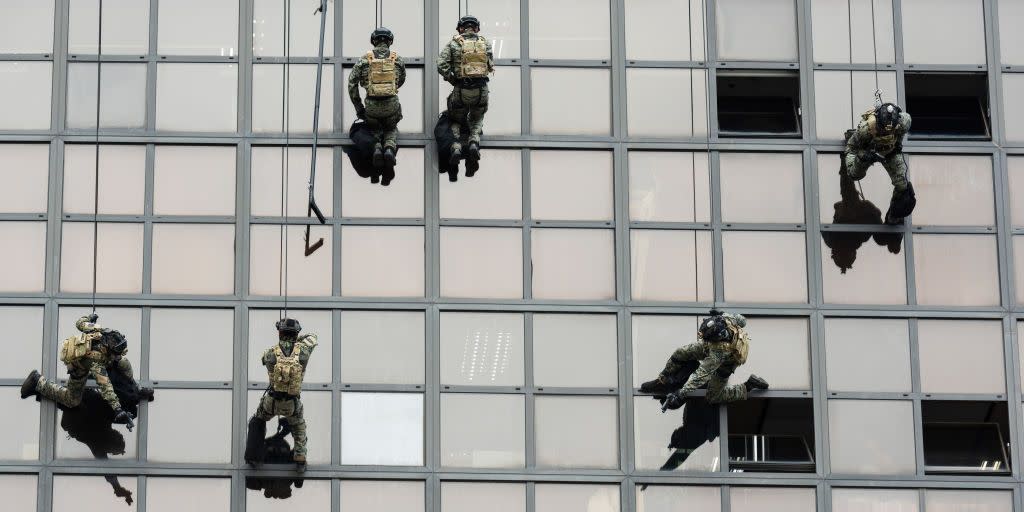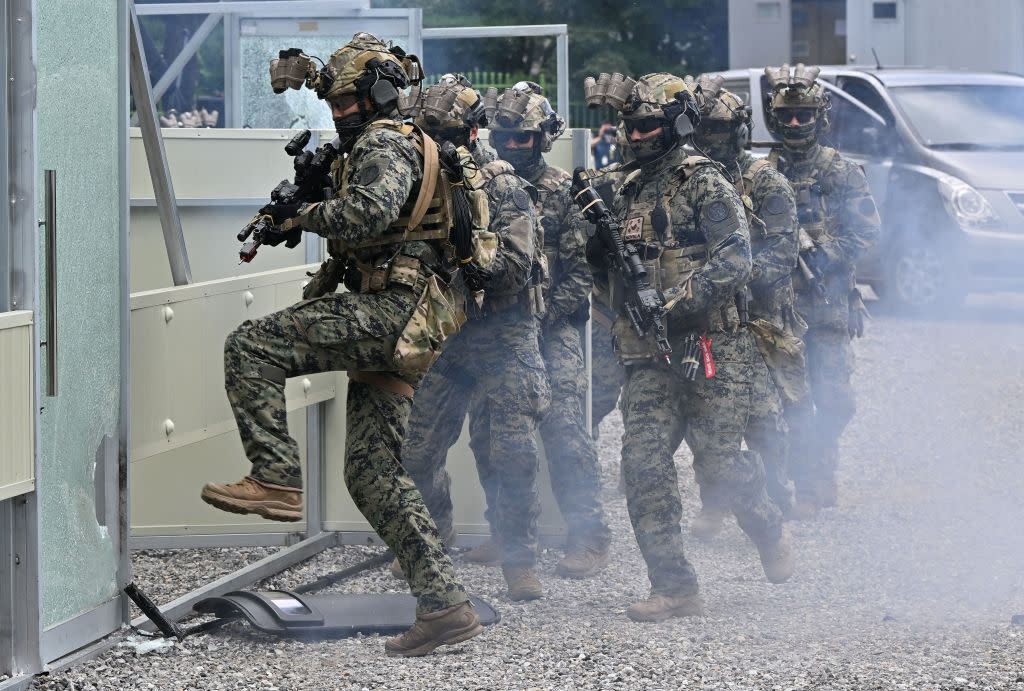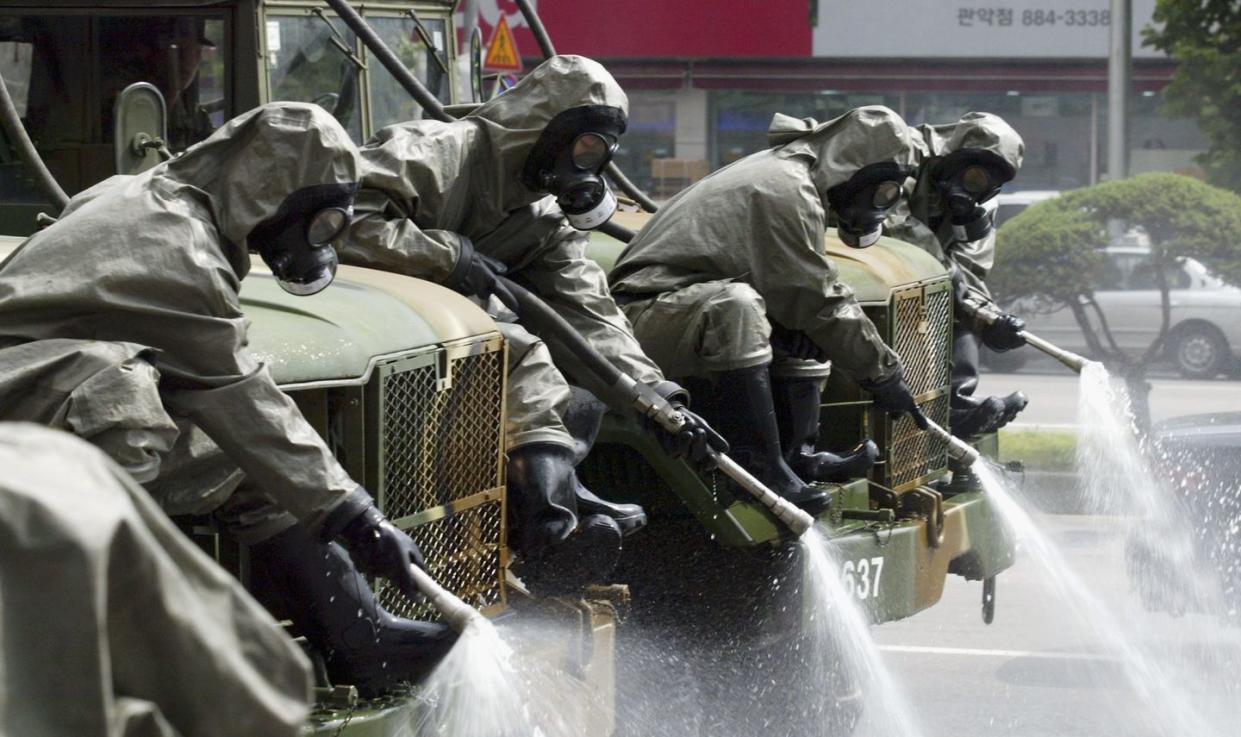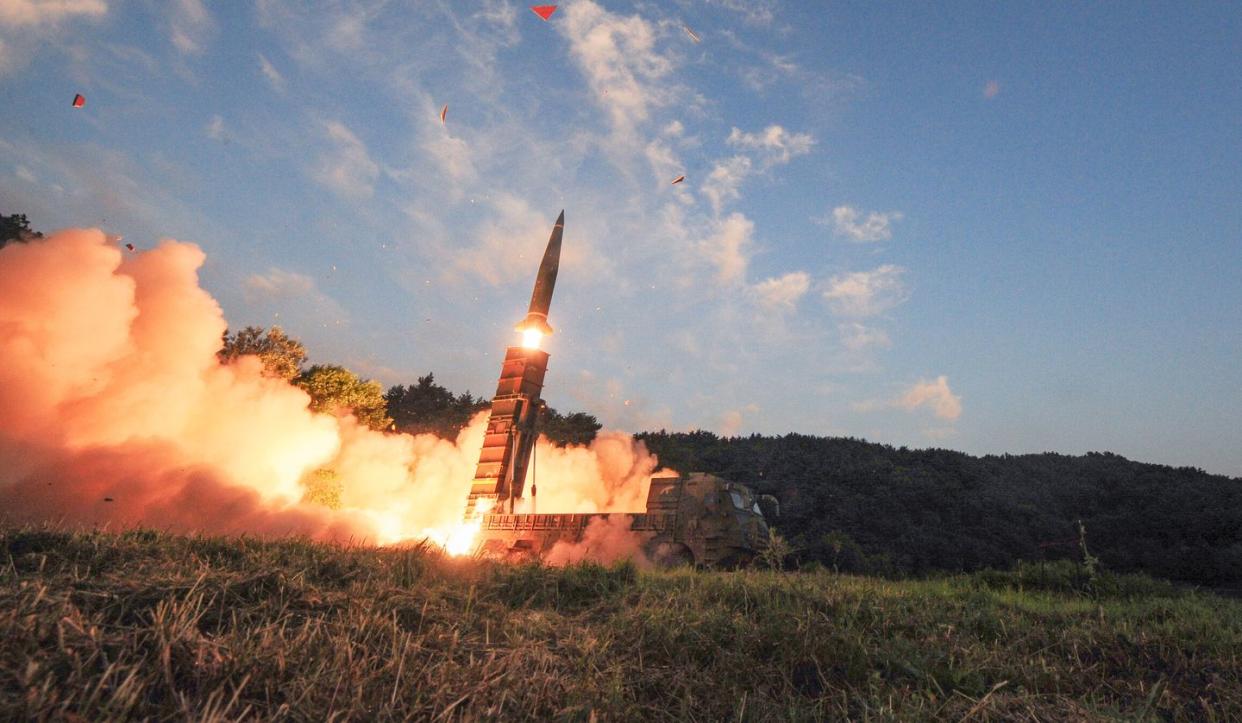The U.S. and South Korea Are Simulating a North Korean Attack

The U.S. and South Korea are currently in the middle of their largest joint military exercises since 2017.
Strictly defensive in nature, the exercises are meant to simulate attacks on South Korea.
South Korea is not helpless, however, and retains long-range missiles and commandos capable of launching “decapitation strikes.”
The United States and South Korea are in the middle of their largest joint military exercises in years. Ulchi Freedom Focus, an exercise designed to test responses to an outside attack, kicked off last week and will run through September 1. The exercises model strictly defensive responses to an attack, but South Korea can also launch its own attacks without the help of the United States.
✈ Don’t miss any of our best-in-class military and defense coverage. Join our squad.
U.S. Forces Korea describes the exercises as a “computer simulated, defense-oriented training event designed to enhance the ROK-U.S. combined defense posture.” South Korea’s Yonhap News Agency described the accompanying Ulchi Freedom Shield exercise as including forces from both countries in “field training and civil defense drills.” The exercises involve an unspecified number of U.S. and South Korean troops, but Bloomberg News describes them as the biggest “in about five years.”
Typically, the United States and South Korea conducted two large-scale field exercises annually, including the Foal Eagle exercises. In 2018, President Donald Trump unilaterally canceled the exercises as a diplomatic gesture to North Korean leader Kim Jong-un. The gesture was not reciprocated, but Trump never bothered to restart the exercises. The COVID-19 pandemic delayed their resumption until 2022.

The United States maintains 28,500 troops in South Korea, 69 years after the end of the Korean War. This includes the Korea Rotational Force (KRF), a brigade-sized task force that rotates combat brigades from the United States to South Korea for nine-month tours. The current KRF unit is the 1st Armored Brigade Combat Team, 1st Armored Division, from Fort Bliss, Texas. The Army also maintains artillery, aviation, combat support, and support troops in South Korea, while the Air Force operates both F-16 and A-10 aircraft from air bases on the Korean peninsula.
U.S. Forces are in South Korea to bolster its defenses from neighboring North Korea, a totalitarian dictatorship with the fourth-largest army in the world. North Korea is also armed with nuclear and chemical weapons and poses an invasion risk to South Korea. In the event of war, the United States would rush to assist South Korea, with the goal of defending the south’s democratically elected government and toppling Kim Jong-un’s regime.

Although Ulchi Freedom Focus is strictly defensive in nature, South Korea has gradually increased its options for offensive action, particularly “decapitation strikes” targeted at Kim Jong-un and his regime. The goal is to deter Kim and his inner circle by making them afraid for their own lives.
One crucial tool for decapitation strikes is South Korea’s growing arsenal of tactical missiles. The Hyunmoo 2B is a short-range ballistic missile with a one-ton high-explosive warhead and a stated range of 310 miles. The missile has a circular error probable (CEP) accuracy rating of 100 feet, meaning half of missiles fired at a target would land within 100 feet. This is considerably less accurate than comparable American missiles, including the Long-Range Hypersonic Weapon, which boasts a CEP of six inches. Hyunmoo 2B is also being fitted to a South Korean submarine.

Another tool is a relatively new Republic of Korea Marine Corps regiment nicknamed “Spartan 3000.” The regiment, formed in the late 2010s, consisting of elite special operations troops, is tasked with training to infiltrate North Korea and eliminate high-ranking regime officials, including Kim himself. The entire regiment of 1,000 or more marines can be ready for deployment within 24 hours.
The United States and South Korea can deter North Korea, but only if the North understands that the U.S. military can quickly act on promises to help repel outside attack. Canceling the exercises without getting anything in return was a serious blunder, but with Ulchi Freedom Focus and other upcoming exercises, the alliance is finding its feet again. However, after nearly 70 years, it is fair to ask how much longer must U.S. forces stay and protect the 10th largest economy in the world.
You Might Also Like
